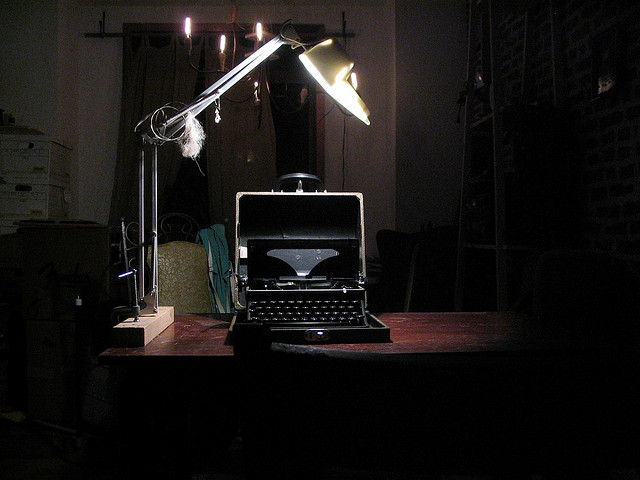The European Cybercrime Centre (EC3) had a big win last week, assisting French and Romanian authorities to take down a large international online crime syndicate. It took over 450 police officers and 117 search warrants to apprehend the 65 individuals involved in the racket across the two countries. The group, who had amassed at least two million Euros, targeted computers across Europe involved with international money transfers. They utilised Remote Access Tools and key loggers to infiltrate target computers and then concealed the stolen cash in hidden back accounts and property investments. The EC3 played a crucial role in the sting, helping to coordinate simultaneous raids across the two countries, preventing the hackers from tipping off their international colleagues.
The head of the inquiry into NSA spying activities in Germany, Patrick Sensburg, has a novel solution to blocking the prying eyes of foreign intelligence agencies: typewriters. With tension still running high after last year’s revelations of NSA spying on Chancellor Angela Merkel, it seemed as though Sensburg was employing a tactic straight from the Russian FSO playbook when he spoke about replacing computers with typewriters and ‘not electric models’ on German television. When pushed on the issue by the host, he insisted this was ‘no joke’.
Also not laughing are Vietnamese internet users, whose internet speeds have slowed significantly last week following damage to one of the country’s main fibre-optic submarine cables. The Asia-America Gateway (AAG) cable that carries internet traffic undersea to Vietnam from Hong Kong and the US was severed in relatively shallow water 18km off the coast of Vung Tau, slashing speeds by up to 40%. In what will be a frustrating wait, the company has yet to announce a timeline for when the cable will be fixed.
There has been no comment from the Vietnamese government as to the reasons for the breakage, but the country has been plagued by similar incidents almost on a yearly basis. Salvagers have in the past pulled up millions of dollars’ worth of cable from the sea floor often in pursuit of old copper telephone cables left over after the Vietnam War, but have occasionally removed the comparatively worthless fibre cables. The government has stepped up patrols and surveillance of the cables recently to prevent that very issue, so it will be interesting to watch reports into the reasons behind the breakage unfold.
You can find the damaged cable on Built Visible’s excellent new map that charts the construction of the undersea web of submarine cables from the early days of telephone copper to the high speed fibre that drives the internet of today.
Our friends over at the Centre for New American Security (CNAS) have published a new paper by former Secretary of the Navy and Obama advisor Richard Danzig titled Surviving on a Diet of Poisoned Fruit: Reducing the National Security Risks of America’s Cyber Dependencies. The paper ‘offers key insights about how to improve US national security policymaking to address cyber insecurity’. Danzig assesses the current lay of the land, identifying existing IT security weaknesses and makes nine recommendations for both the US government and wider audiences as to how to begin to tackle those issues.
And finally for those keeping score, the latest completion date for the new ASIO building has been pushed back to September this year. The building, which is also set to house the new Australian Cyber Security Centre, will take around another year to be fully fitted out and occupied by ASIO and ACSC staff, probably pushing the true lift-off date into 2016. Building delays continue to hamper the site, with some suggesting that this latest September handover date is by no means a done deal.
Jessica Woodall is an analyst in ASPI’s International Cyber Policy Centre. Image courtesy of Flickr user Adam Mayer.


